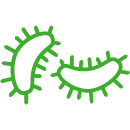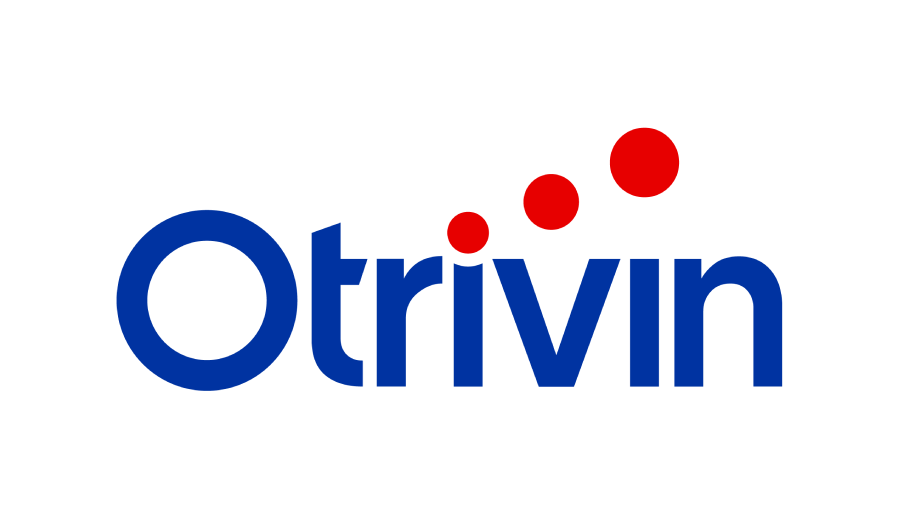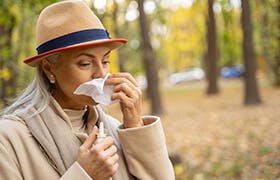
How do we breathe?
Breathing consists of two phases: breathing in (inhalation) and breathing out (exhalation). Breathing involves the movement of air into and out of the chest, and is also called ventilation. The term respiration relates to the exchange of gases in the lungs that happens when you breathe.1
The respiratory system works so that you breathe in and out comfortably at rest where the least effort is required to move air – and you’re probably not conscious of your breathing. When you exercise, you need to move more air. To do this you can take bigger breaths or breathe more quickly – usually both.2
What happens when we breathe in and out?
Although breathing is usually automatic, you can control it if you want to, such as when you talk or sing, for example.2
Have you ever thought about what is happening in your body when you breathe in and out? Once you focus on your breathing, you might be able to feel the following things happening.
When we breathe in:1,2
- The diaphragm and the muscles just under our ribcage contract. The diaphragm moves downward, increasing the volume of the chest cavity, and the muscles pull the ribs up and outward, expanding the rib cage and further increasing chest volume
- This increase of volume in the chest lowers the air pressure in the lungs compared to air outside the body
- As air always flows from a region of high pressure to an area of lower pressure, it then enters the body’s airway (nostrils, throat, larynx and trachea) and then into the lungs
When we breathe out:1,2
- The diaphragm and muscles under the ribcage relax, restoring the chest cavity to its original (smaller) volume
- This pushes air out from the lungs into the atmosphere as exhaled breath
How does your body control breathing?
Our body needs oxygen to function. Your brain continuously receives signals from your body telling it how much oxygen is in your blood. When you start vigorous exercise, your brain signals to the muscles involved in breathing to speed up your breathing rate so your muscles get enough oxygen. Through working harder, your lungs also prevent undue build-up of carbon dioxide in your bloodstream, taking it out of your body in your breath.1,2
This control is automatic, involuntary and continuous, so you don’t have to think about it.1 That is, until things go wrong and you find breathing difficult.
What function does the nose have in breathing?
Your nose helps trap and filter impurities in the air you inhale before it reaches the lungs.
Let’s look at what those impurities are in more detail:
- Allergens:3,4

Pollen

Dust mites

Pet dander
- Air pollutants:

Particulate matter such as dust.5

Gaseous pollutants such as ozone (O3), nitrogen dioxide (NO2) and sulphur dioxide (SO2)5

Volatile organic compounds released from common household products such as detergents, paints and fuels6
- Pathogens:3

Viruses

Bacteria
The nose is the first line of defence against impurities in the air. Our nostrils are lined with a number of hairs which help prevent potentially harmful substances from entering the nasal passages and delicate lung tissue.7
The impurities get trapped into the sticky nasal mucus inside our noses, and the cilia (tiny hair-like structure on the inside of your nose) clears the particles away towards the back of the throat to be swallowed or coughed out. The risk of infection by viruses is also reduced this way.7
The nose also defends the lower airways from the harmful effects of the breathed-in air by acting as an air conditioner. The nose warms, filters, and humidifies the air so that clean, moist air at a comfortable temperature of 37°C is delivered to the lungs.3

How does the nose filter impurities from the air we breathe?
The nose is a really good filter of particles in the air. One way that the nose does this is due to the fact that air changes direction through 90 degrees when it passes from the entrance into the main space of the nose (the nasal cavity). This sudden change spins suspended matter out of the main air stream and onto the sticky surface of the inside of the nose.3
Secondly, the airflow speeds up as it passes through the nostrils (the narrowest part of the nose) and then slows as the air stream enters the nasal cavity. The changes in direction and speed of the air stream happen over the same area of the nose, and the slowing of the airflow at this point deposits particles from the air onto the skin inside the nose.3
In fact, most of the effort involved in breathing is related to the nose’s function as a filter.3
How does a blocked nose affect breathing?
If the mucous membrane in your nose becomes irritated, causing mucus to accumulate, you tend to end up with a stuffy, or blocked nose. This makes breathing through your nose difficult, making it hard to sleep and making you feel tired.8
By using an effective nasal decongestant, you can quickly clear your nose and breathe more easily, day and night. The main active ingredient in Otrivin Original Nasal Spray is xylometazoline, which rapidly starts to relieve nasal congestion in two minutes and continues to work for up to 12 hours.8
Xylometazoline acts directly on the blood vessels that line the nose. By working directly on the affected area, it can quickly reduce swelling, drain the sinuses and relieve congestion.8
References:
- Novotny S, Kravitz L. The Science of Breathing. Available from: https://www.unm.edu/~lkravitz/Article%20folder/Breathing.html (last accessed March 2020)
- British Lung Foundation. How your lungs work. Why do you breathe? Available from: https://www.blf.org.uk/support-for-you/how-your-lungs-work/why-do-we-breathe (last accessed March 2020)
- Eccles, R. 2009. The nose and control of nasal airflow. In: Adkinson N, Bochner B, Burks A, Busse W, Holgate S, Lemanske R, O'Hehir R, eds. Middleton’s Allergy, Principles and Practice, 8thedn - Vol. 1. Philadelphia: Mosby, 640 – 51
- World Allergy Organization. White Book on Allergy: Update 2013. Available from: https://www.worldallergy.org/wao-white-book-on-allergy (last accessed March 2020)
- World Health Organisation. Ambient (outdoor) air quality and health. Available from: https://www.who.int/airpollution/en/ (last accessed March 2020)
- United States Environmental Protection Agency. Volatile organic compounds' impact on indoor air quality. Available at: https://www.epa.gov/indoor-air-quality-iaq/volatile-organic-compounds-impact-indoor-air-quality (last accessed March 2020)
- Jones N. Adv Drug Deliv Rev. 2001;51:5–19
- Eccles R, Martenssen K, Chen S. Effects of intranasal xylometazoline, alone or in combination with ipratropium, in patients with common cold. Curr Med Res Opin. 2010;26:889–899
Show all references
Close references






